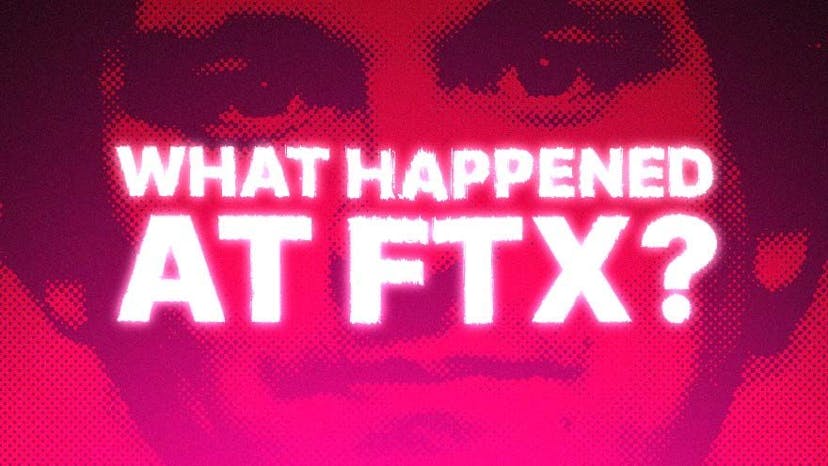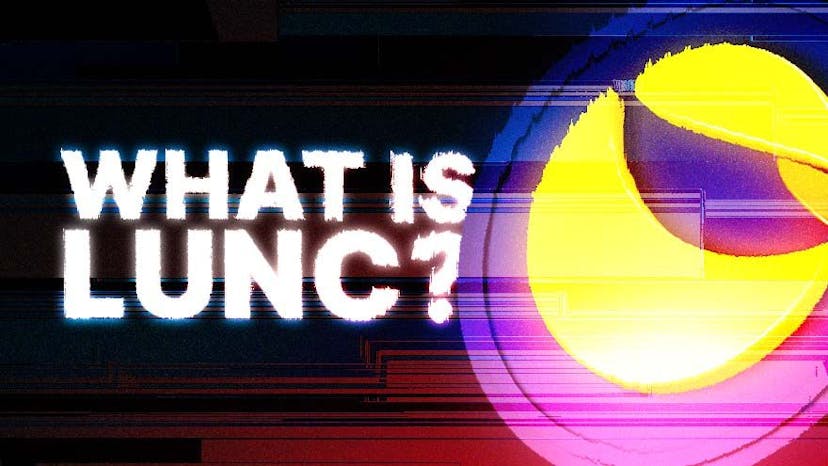What was Luna?
A Step-by-Step Guide to Why This Crypto Darling Failed and its Aftermath
By: Rahul Nambiampurath • Loading...
Tutorials
Last May, LUNA, the native token for the Terra ecosystem, was swept up in one of the most impactful failures in crypto. By some estimates, the collapse of Terra triggered $83 billion in losses.
As a result, it’s important to understand the role LUNA played in the calamity and the lessons for the cryptocurrency industry. It’s also key to define LUNA — the native currency for the Terra 2.0 blockchain — and explore how it functions today.
How Did Luna Begin?
In the same way ETH is the native cryptocurrency for Ethereum, LUNA powered the Terra blockchain, a would-be rival to Ethereum. Terraform Labs launched Terra (LUNA) in 2018, headed by crypto entrepreneurs Do Kwon and Daniel Shin.
Their plan was to create an alternative ecosystem to Ethereum’s, complete with a native token (LUNA), a stablecoin (UST), and various applications and services, such as the yield-generating Anchor Protocol.
Why Was Luna Popular?
Built on the Cosmos blockchain framework, Terra was able to execute up to 10,000 transactions per second (tps), which exceeds Ethereum’s 14tps and Bitcoin’s 7tps. Thanks to this performance, Terra’s ambition was to reach the same scale as Visa, the credit card-based payment system. Terra would do so with smart contracts.
Terra’s algorithmic stablecoin, UST, was designed to transfer value anywhere with an internet connection at a negligible cost but without inherent crypto volatility. That’s because stablecoins are pegged to the value of the dollar in a one-to-one ratio. Therefore, $1 USD = $1 UST.
But there was a big problem. Ideally, stablecoins are redeemable with physical cash held in a physical bank, such as USDC or USDT. That’s their reserve. Algorithmic stablecoins like Terra’s UST follow a different model that is solely on-chain.
UST is dynamically backed by the value of LUNA tokens. To maintain UST-dollar peg, users either mint or burn LUNA. Here is how that mechanism works:
- If UST would go over the one-to-one ratio against the dollar, that means there are not enough UST in circulation. After all, the value of something is high when it is in demand, just like the value of something is low when the supply exceeds the demand.
- Therefore, the UST-USD peg would be tweaked by burning UST to mint LUNA.
- In the other direction, if the UST-USD peg goes under the one-to-one ratio, this means there are too many LUNA and not enough UST. Then, LUNA tokens would be burned in exchange for minting UST stablecoins.
In other words, UST algorithmic stablecoin maintained its peg by mirroring the fundamental economic law of supply and demand. For example, at one point LUNA was priced at $100. To create (mint) new UST, one would burn 1 LUNA (worth $100) to mint 100 UST.
Just before it slipped to less than zero, 1 Luna was worth $86.16. Source: CoinMarketCap
Just before it went under zero, 1 Luna was worth $86.16. Source: CoinMarketCap
This deflationary model became extremely popular. LUNA tokens skyrocketed to $116.13 in April 2022 from less than $1 in early 2021. Terra created many crypto millionaires.
What Preceded Luna’s Collapse?
In addition to making Luna valuable, because it was integral to maintain the UST peg, there was another critical factor. Stablecoins are extremely useful in the entire decentralized finance (DeFi) ecosystem. They allow the seamless transfer of assets without having to exit the cryptosystem and convert to fiat currencies. In this way, they lubricate commerce in the digital assets space.
They also serve as useful collateral for loans. Imagine depositing a collateral for a loan, only for that collateral to drastically drop in value the next month. Stablecoins prevent such loan liquidation from happening. At least, they were supposed to until algorithmic stablecoins came along.
Anchor Protocol was the cornerstone of this function in the Terra ecosystem. This lending dApp opened the UST gateways by allowing anyone to deposit UST stablecoins, which would be used as a loan-issuing liquidity pool.

Cross-Chain Messaging Can Blow Open Interoperability
It's Time to Move Away From Vulnerable Bridges
In exchange, UST depositors received a generous reward of up to 20% annual percentage rate (APR). At the time, the interest rate on savings accounts in traditional banks was 0.07 percent, serving as an additional motivator.
However, this was also the time when the U.S. Federal Reserve started to raise interest rates to combat inflation. In turn, by making the capital more costly, the prices of cryptocurrencies were going down as people exited their market positions. On May 7, investors withdrew $2B in UST from Anchor Protocol.
Total-value-locked (TVL) of Anchor Protocol was $16.75 billion on May 7th, just before the downfall. Source: DeFiLlama
This rocked the UST peg down to $0.91, triggering traders to exchange $0.91 worth of UST for $1 worth of LUNA. In the ensuing domino effect, more people started to sell their UST, which then triggered enormous LUNA minting.
Of course, this action devalued LUNA tokens because the supply exceeded the demand by a high margin. It wasn’t long before LUNA itself crashed and got delisted from exchanges, as both Luna and UST became worthless.
What About New Luna?
After the value of LUNA was wiped out, the Terra community created a hard-fork of the blockchain called Terra 2.0. The hard-fork reshuffled Terra’s ecosystem:
- Original LUNA tokens became Luna Classic (LUNC).
- Original TerraUSD (UST) stablecoin became TerraClassicUSD (USTC).
Unlike the original Terra network, Terra 2.0 has no algorithmic stablecoin. The new Terra 2.0 became a community-governed blockchain.
To enable future reimbursement of losses on the new chain, Genesis airdropped the new Luna tokens. This was based on the Terra blockchain snapshot on May 7 and after May 27. Those eligible for the Genesis airdrop held both old (LUNC) and (USTC) tokens.
After the hard-fork, Luna has 1 billion tokens, distributed to revive the Terra 2.0 ecosystem in the following manner:
- 8% of Luna tokens to dApp developers.
- 1.5% of Luna tokens to developers who were live during Terra Classic.
- 0.5% of Luna tokens to emergency dApp development.
- 35% of Luna tokens to pre-fall Luna holders.
- 10% of Luna tokens to pre-fall UST holders.
- 10% of Luna tokens to post-fall Luna holders.
- 15% of Luna tokens to post-fall UST holders.
Unlike Terra Classic (LUNC), new Luna has been trading above $1 dollar since the fall. If Luna manages to get listed on major crypto exchanges, more such valuations spikes are to be expected.
What Happens Next?
It is unlikely Terra 2.0 will capture even a semblance of its former success. On Oct. 28, the community proposed the recovery of $4M worth of non-Terra assets held by the Terra Classic Community Ethereum Crosschain Multisig Wallet.
These funds may be diverted to developers. Yet, even if that happens, Terra dApps may just recoup their losses and move onto greener, less radioactive crypto pastures. The bottom line is, there is already too much competition from other chains to place one’s bet on Terra’s revival.
Series Disclaimer:
This series article is intended for general guidance and information purposes only for beginners participating in cryptocurrencies and DeFi. The contents of this article are not to be construed as legal, business, investment, or tax advice. You should consult with your advisors for all legal, business, investment, and tax implications and advice. The Defiant is not responsible for any lost funds. Please use your best judgment and practice due diligence before interacting with smart contracts.
Advertisement
Get the best of The Defiant directly in your inbox 💌
Know what matters in Web3 with The Defiant Daily newsletter, every weekday
90k+ investors informed every day. Unsubscribe anytime.

